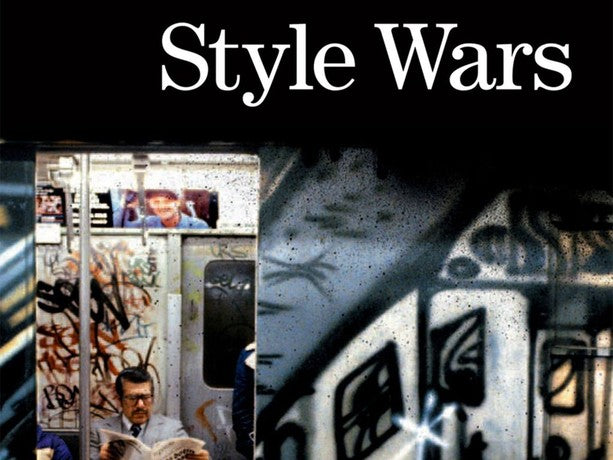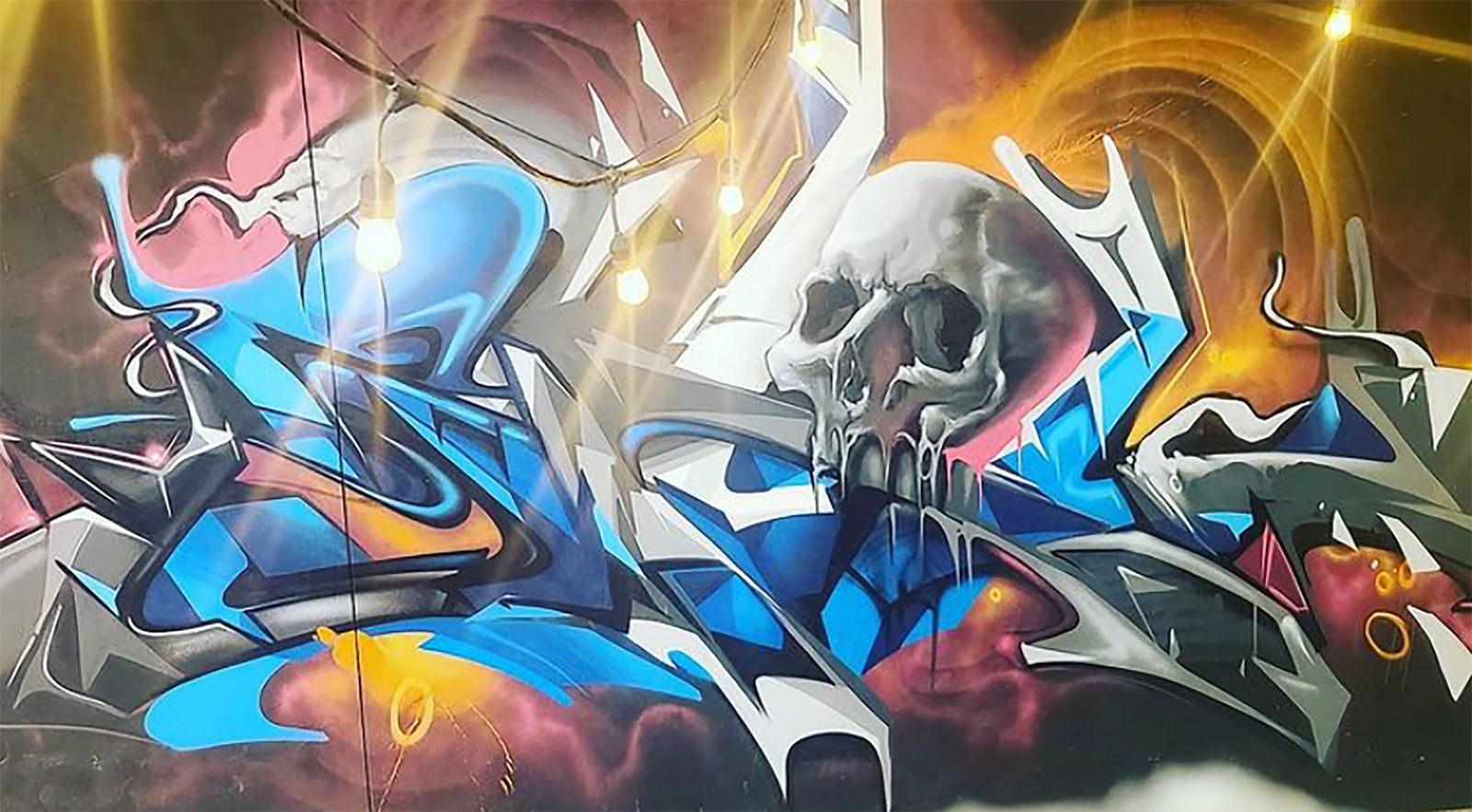As the Department of Cultural Affairs and Special Events outlines the 2019 budget for supporting and sustaining Chicago’s vibrant public art scene, questions of ownership and value of street art come to the spotlight. Some well-known murals have been painted over by city workers, while others disappeared in the city’s constant construction projects, raising concerns among those who see more in Chicago’s graffiti than mere acts of vandalism or artist self-promotion.

These debates reveal that to many of us the street art represents one of the major facets of Chicago’s voice, its symbolistic personality, and its local culture.
Thus, many institutions and district authorities have backed Chicago’s mural art over the last several years, giving rise to several mural districts in the city which now function as public street galleries, viewable at any time and highly attractive to tourists and locals alike.

Are you familiar with Chicago’s three major mural districts? The Wabash Arts Corridor, Pilsen, and Logan Square/Wicker Park communities all have their distinct personalities, in which their mural art is both presented and viewed quite differently from each other.
Would you like to take a trip around the city and see Chicago’s graffiti murals for yourself? We have prepared a brief but informative breakdown of what you can expect from each of the Chicago’s mural districts, with links to resources you can use to create your own independent tour.

The Wabash Arts Corridor (WAC)
Founded in 2013 by the Columbia College Chicago, this passageway became Chicago’s cultural hub, home to several educational and cultural institutions, galleries, performing art spaces, and major hotels and restaurants. However, this Corridor also became an ever-evolving “living urban canvas,” an outdoor kind of an art museum particularly known for its stunning graffiti murals. Columbia College Chicago’s competitive events sponsored some of this graffiti art, while other pieces were done by more independent art studios and international artists.
New competition events (the latest call for submissions was just in August!), local construction projects, and inciting political events within Chicago’s urban scene constantly alter the look of the Wabash Corridor’s walls, but some of its most famous artworks are still available to the public eye.
Some of the Corridor’s most iconic murals are pretty recent (the earliest of them created in 2015), but definitely impressive in their size. They cover multiple stories of the tall urban buildings, and occasionally an entire block in their width, appropriately called the “big walls” in the Corridor’s official portfolio.

Despite their young age, some of the murals from this category already began to represent not only the Wabash Arts Corridor, but Chicago’s graffiti art scene at large, like “From Bloom to Doom” by the Netherland artist Collin van der Sluijs. The mural draws attention to two endangered bird species from Illinois - the yellow-headed blackbird and the red-headed woodpecker, but is stunning in its detail and color aside from its admirable message. You can find it on the north-facing wall of 1006 S Michigan Avenue.

Featured first among the tourist photos on the Corridor’s TripAdvisor page is another iconic graffiti mural by artist Marina Zumi, the “Impossible Meeting.” Zumi is most known for her works during the dawn of Chicago’s graffiti art scene, with a unique style influenced by her background in fashion design. The mural, painted on the west wall of 910 S Michigan Ave, conveys a captivating feeling of the mystical and the feminine.
While the June-August 2019 tours offered by the Columbia College Chicago have ended, the beauty of this mural district is open to the public every day. The Wabash Arts Corridor map can guide you to over 37 pieces within Chicago’s most famous mural art district.

If you plan an independent trip, you will not only get a chance to study the masterwork of the large murals at your pace, but also to discover smaller pieces of art punctuating the Corridor. Among them is Eelco Van den Berg’s “Wild Life” in the alleyway of 1306 S Michigan, exploring the universal point of convergence between the living and the cosmic.

Chicago's Pilsen District Murals
Pilsen district is alive with exciting art, award-winning culinary establishments, iconic music and nightlife venues. This impressively active Latino cultural scene is the reason Forbeshas named it one of the “12 Coolest Neighborhoods Around the World.” However, the local murals also have an interesting cultural history behind them.
Following the destruction of a local neighborhood that served as an important entry point for Mexican immigrants as a part of the construction process for the University of Illinois at Chicago, Pilsen had a spike in the Mexican-American presence in the early 1960s.
Seeking representation and commenting on important political events, the emerging Mexican-American street art scene eventually turned this area into an influential Chicago graffiti art district, with respected and thus continuously preserved murals.

Pilsen has a long history of cultural clashing, producing such works as “Peace” by Mario Castillo. It was completed in 1968 on the wall of the Halsted Urban Progress Center, located at 1935 S Halsted St. This work is the first Latino mural in the US completed during the New Public Art Movement of the 1960s, a commentary against the Vietnam War and an attempt to give voice and validity to the overlooked Mexican community in the district.
The state of the neighborhood has changed since then, but the graffiti art continues to leverage cultural power. The streets that bear early anti-war messages and murals that educate Mexican residents about their proud heritage are now also occasionally filled by the works commissioned by local businesses as a part of their marketing strategy.

Consider, for example, Memo’s Hot dogs on 1447 W 18th St decorated in bright colors and attractive street art. Among them is a rather famous door graffiti by MATR and KOZMO, a rather prolific Pilsen married artist couple. This door piece is titled “La Dama,” featuring an attractive lady with a pin-up hairstyle, in vintage colors, and with a seductively daring attitude. The eatery itself boasts very good reviews, which makes it an extra excellent thematic lunch stop during your graffiti viewing trip!

And yet, despite their more modern application, Pilsen mural art did not lose its daring edge. An independent exploration of this Chicago mural district will reveal lesser-known gems like “Declaration of Immigration” created by Yollocalli Arts Reach students in collaboration with Salvador Jiminez-Florez on the topic of United States immigration. Finished in August 2009 at 1808-29 S Blue Island Ave, the mural is a 2-story tall commentary on the struggle of illegalization and on the intentional fostering of intra-ethnic tensions.
If you want to take a trip through Pilsen’s vibrant artistic community, keep in mind the monthly 2nd Fridays Gallery Night, where artist studios open their galleries to the public, free of charge. Don’t forget to pay a visit to the National Museum of Mexican Art to immerse yourself in the world of visual and performing Mexican art, also with a free admission. Meanwhile, for a fuller list of this district’s graffiti art, you can look through Pilsen Historic District brochure on the government's website to locate more of those exceptionally unique Latino murals.

Street Art and Murals in Chicago's Logan Square and Wicker Park
Forbes had something to say about Wicker Park as well, calling it the nation’s “Best Hipster Neighborhood” in 2012 for its particular local culture, vintage stores, record shops, unique coffee houses, bookstores, art galleries, parks, indie music venues, pubs, and artisanal bars. The Logan Square and Wicker Park Chicago district is home to the 1915 Logan Theatre with a vintage interior, and one of the largest local Chicago farmers’ markets. Aside from all of this incredible variety, this district is offers over 50 captivating murals for public viewing.

Among these murals is the iconic “Greetings from Chicago” art done in the style of the “Greetings From” postcard, located at 2226 N Milwaukee Ave. It’s relatively new, but it has already been featured on television, in magazines, and on the Chicago’s official Wikipedia page. The travelling artist duo, muralist Victor Ving and photographer Lisa Beggs, captured the major visual symbols of local culture (such as the downtown skyline and “The Bean”), but also themselves had an intimate encounter with Chicago’s nighttime alleyway heartbeat.
The duo talked about the mural’s rushed creation overnight, where they had to sleep next to the train tracks and interact with peculiar local passerbys. Perhaps it is this experience in particular that animated the colorful mural and gave it an unexpectedly bold feeling of familiarity that appears welcoming to visitors and prideful to locals.
Just like the “Greetings from Chicago” art, a lot of graffiti art in this mural district is elusive or even hidden. They range from a smaller Mexican art Chase Bank mural on 2235 N Milwaukee Ave:

To an ever smaller ground mural around 1416 N Wood St, “Flight Risk,” commenting on the prevalence of bird death because of their collisions with buildings, by artist Wreckzilla:

To Jeff Zimmerman’s “The ConAgra Brands Mural” hiding behind the trees of Wicker Park’s Bloomingdale Trail at 1813 N Milwaukee Ave, exploring themes of physical intersection between humans and nature:

This Chicago mural district can prove to be the most challenging to navigate between the three neighborhoods, but the map provided by Wicker Park Bucktown Chamber of Commerce can be used to plan out an easy route that focuses on the saturated area between N Damen Ave and Ashland Ave for an exciting independent tour! If you are willing to travel for a bit, there are a couple of street art galleries south of Wicker Park. Chicago Truborn and Vertical in particular offer free admissions and feature urban, contemporary, and street art.
The Final Verdict?
The three Chicago mural districts have a lot to offer to tourists and locals alike, along with a taste for their personality formed around their historical significance, venues, and local communities. It is worth studying the famous murals in person, but walking around might reveal some of the more elusive, but not any less meaningful pieces.
From the time your read this article to the time you venture out onto the street the look of some of the featured areas might have been changed completely. With street art being an ever-evolving living canvas, there is no excuse to not witness this process yourself, in the city as active and diverse as Chicago.






Michael Spillers
June 16, 2020
Just and FYI. The cover picture for this article is not in Chicago it’s actually downtown Minneapolis. I live there and actually have a friend that helped the artist with it. I wouldn’t want your company to put out the wrong information. People might read this article and then go to Chicago looking for the mural of Bob Dylan and be disappointed when they can’t find it or are informed that it’s in another great street art community like Minneapolis.